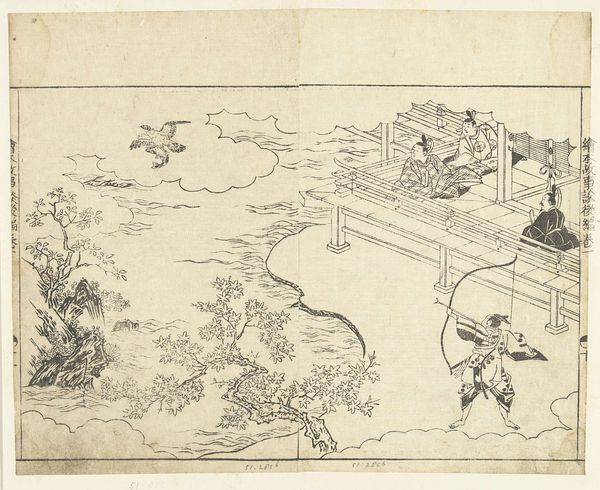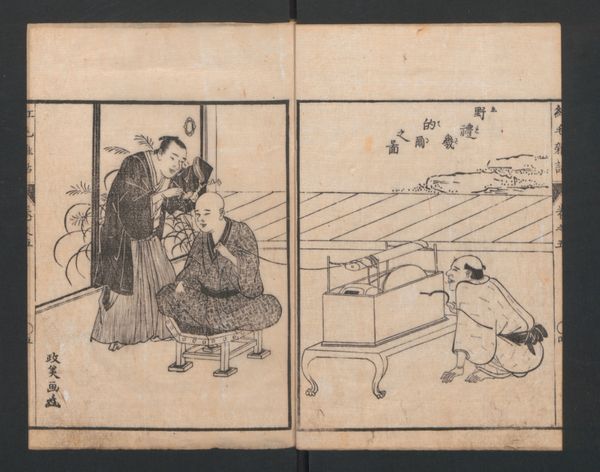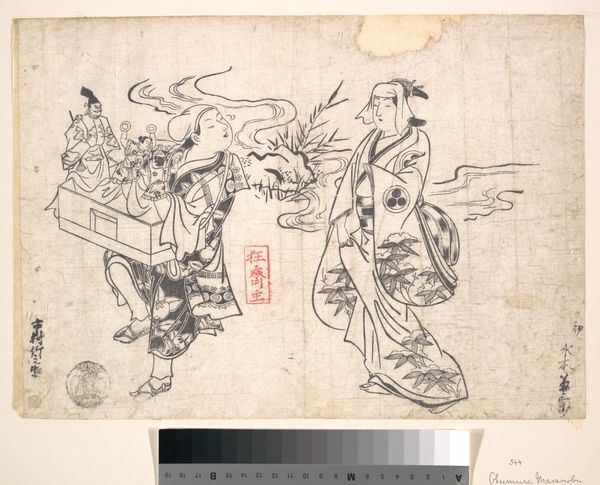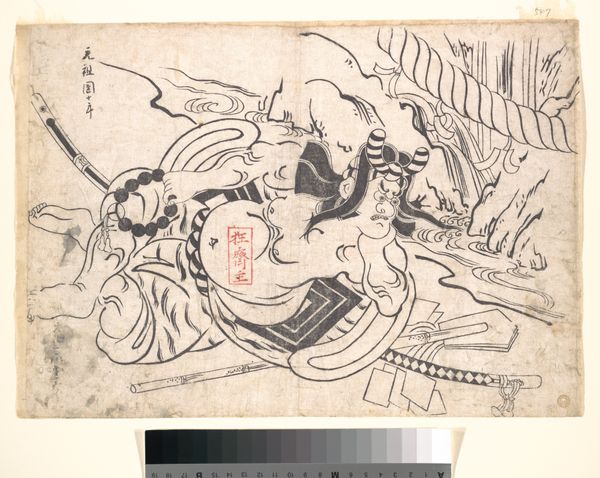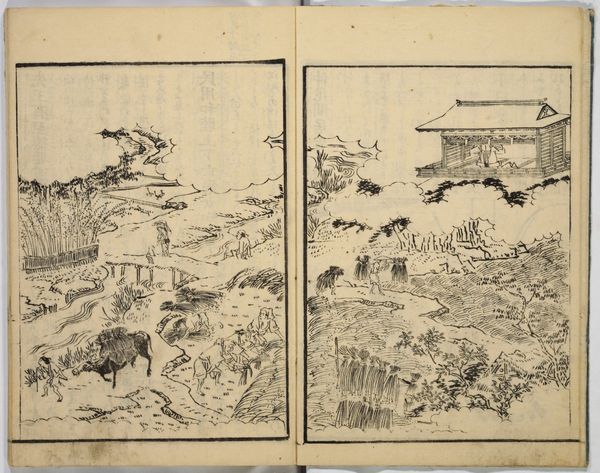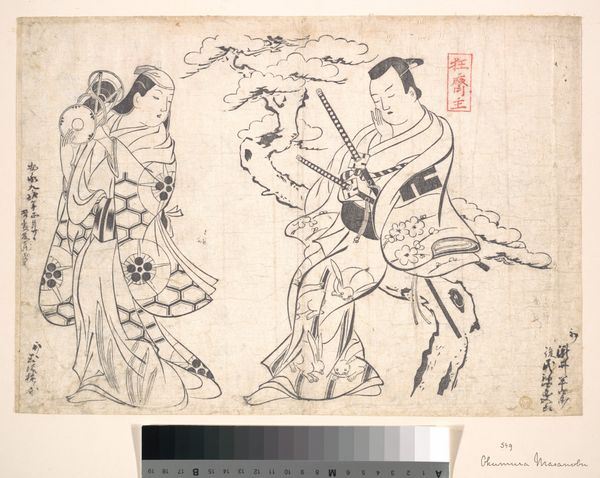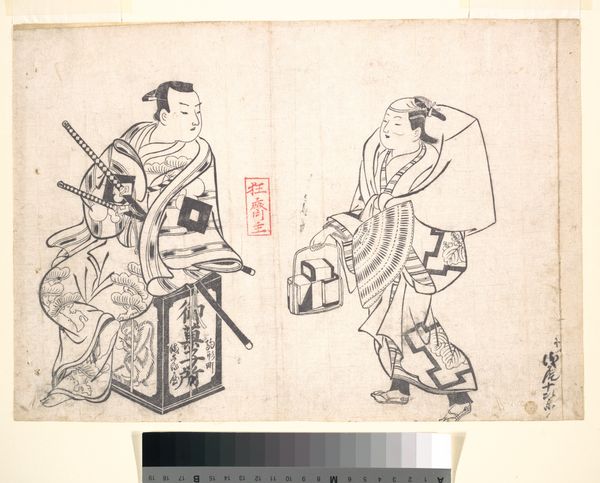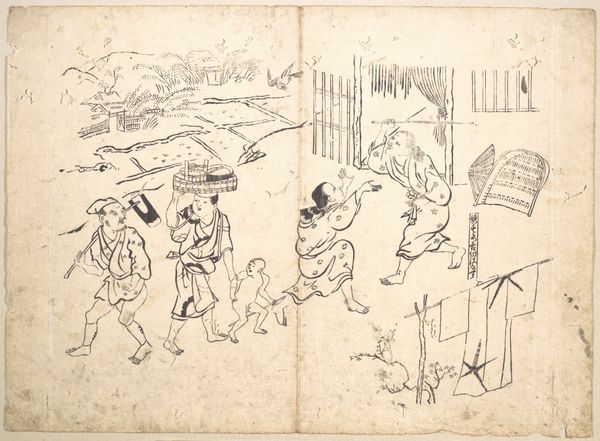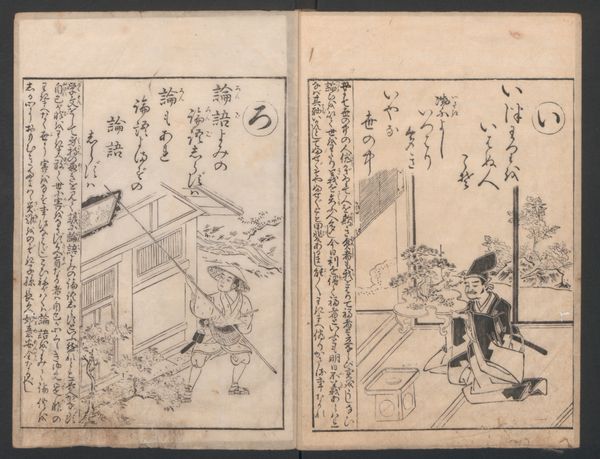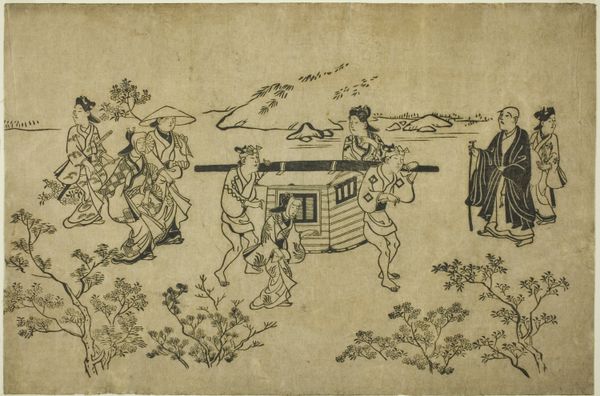
drawing, print, ink, woodcut
#
drawing
#
narrative-art
# print
#
asian-art
#
landscape
#
ukiyo-e
#
figuration
#
ink
#
woodcut
#
line
#
genre-painting
Dimensions: height 276 mm, width 415 mm
Copyright: Rijks Museum: Open Domain
Curator: I find this ink drawing incredibly whimsical; there’s an immediate sense of journey about it. Editor: Yes, it’s a captivating piece! This artwork is titled “Reizend gezelschap” – “Traveling Company,” in English – and it dates from sometime between 1700 and 1900. The print is made from woodcut, crafted by the hand of Hishikawa Moronobu. We are lucky enough to be exhibiting it here at the Rijksmuseum. Curator: Hishikawa, always moving me with his Ukiyo-e visions of the floating world. Those bearers – can you imagine carrying a closed palanquin on a trek like that? I wonder who or what is being transported within. Editor: Palanquins served as mobile rooms for high-ranking individuals. In Japanese history, especially in the Edo period, the strict hierarchy dictated who could use one. Even the colors and decorations denoted status. It speaks to power, doesn't it? And restrictions. Curator: I do like the cheeky servant running along next to the palanquin; he has so much swagger for someone on the job. Editor: A wonderful observation! The artist also used that running figure to show dynamic motion in the processional. The people in the front, though, they march to a different beat. Curator: Quite. They could be traveling towards anything, really. That monk seems almost indifferent, a solemn figure detached from the buoyant energy around him. It is more of a scene on how things or people were transferred. Editor: Exactly! I think what strikes me is how, even in this "genre painting," as we sometimes call such scenes, the work speaks to the grand themes of access, social order and public performance. Curator: What's interesting to me is how Moronobu captures such profound themes with such spare, delicate lines. I look at the stark simplicity of the ink, the absence of color... and yet, the world blooms! Editor: Yes, the power of line. So characteristic of Japanese prints. Looking closer reminds us that what may seem "simple" is actually a refined vocabulary honed by generations of artistic and cultural norms. Well, this makes you consider society beyond aesthetics. Curator: Absolutely, the ink bleeds with possibility here. Editor: Agreed. It’s a piece that invites not just aesthetic enjoyment but also historical and social contemplation.
Comments
No comments
Be the first to comment and join the conversation on the ultimate creative platform.
